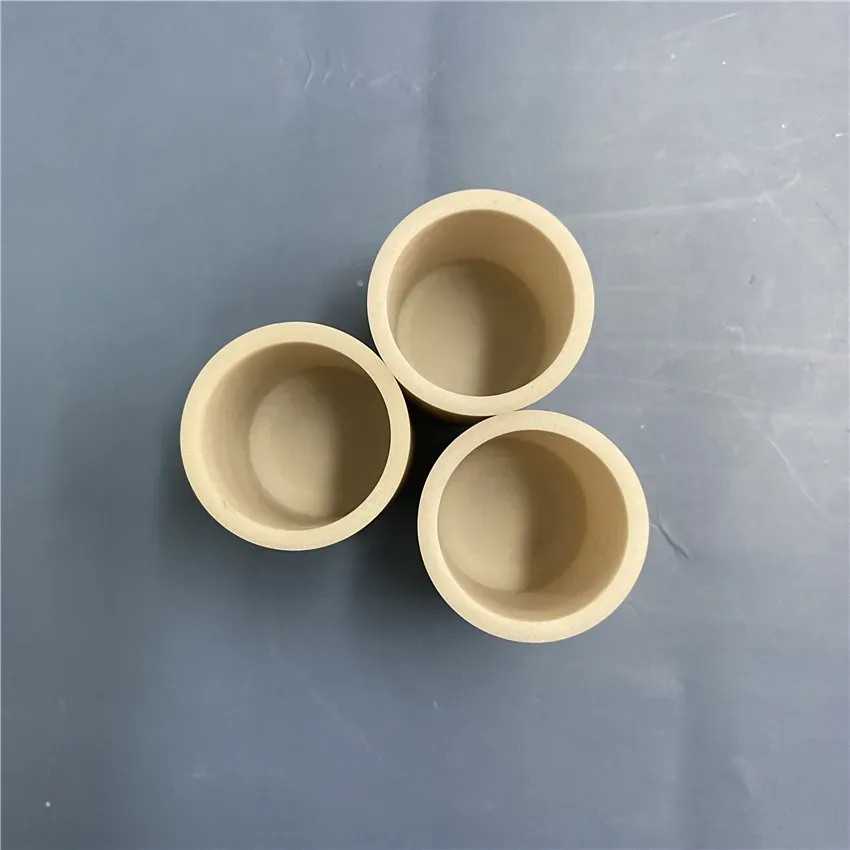Discover Premium Ceramic Products | Durability & Elegance United | Advanced Ceramics
1. Introduction
Just 24 hours ago, a breakthrough at the Materials Research Society’s Spring Meeting revealed that next-gen silicon carbide crucibles are now being engineered with nano-reinforced grain boundaries—boosting thermal shock resistance by over 30%. This isn’t just lab gossip; it’s reshaping how industries from metallurgy to artisanal pottery handle extreme heat. And yes, your fancy casserole dish might owe its durability to the same stuff that melts titanium.

Enter the silicon carbide crucible: the unsung hero of high-temperature applications. Whether you’re smelting rare earth metals or baking a soufflé in a silicon carbide ceramic baking dish, this material doesn’t just endure heat—it thrives in it. Let’s dive into why this ceramic superstar deserves a standing ovation (and maybe a spot on your dinner table).
2. What Is a Silicon Carbide Crucible?
A silicon carbide crucible is a container made from silicon carbide—a compound of silicon and carbon—engineered to withstand temperatures exceeding 1,600°C (2,912°F). Unlike your average kitchen pot, these crucibles laugh in the face of thermal shock, corrosion, and chemical attack. They’re the go-to choice for foundries, labs, and even avant-garde ceramic studios.
Silicon carbide itself is legendary for its hardness (just shy of diamond), thermal conductivity, and mechanical strength. That’s why you’ll also find it in silicon carbide ceramic tiles, silicon carbide burner nozzles, and even silicon carbide ceramic plumbing pipe—because when failure isn’t an option, engineers reach for SiC.
3. Industrial Applications Beyond the Crucible
While the silicon carbide crucible dominates metal casting and glass manufacturing, the material’s versatility spills over into dozens of other forms:

- Silicon carbide brick and rbsic silicon carbide tile block line kilns and furnaces.
- Silicon carbide ceramic columns and silicon carbide ring components stabilize high-temp machinery.
- Silicon carbide tubes—including silicon carbide thermocouple protection tubes and porous ceramic tubes—handle corrosive gases and molten flows with ease.
- Even silicon carbide discs serve double duty: from silicon carbide ceramic grinding disc tools to silicon carbide piezo ceramic disc sensors.
And don’t forget the plumbing world: silicon carbide ceramic disc taps and quarter-turn valves leverage the material’s wear resistance for leak-free performance over decades.
4. Silicon Carbide vs. The Competition
Ever wonder how boron carbide vs silicon carbide stacks up? Boron carbide is harder (great for armor), but silicon carbide wins in thermal conductivity and cost-effectiveness for most industrial heating applications. Plus, SiC is easier to sinter into complex shapes like a silicon carbide ceramic casserole dish with lid—yes, really.
Then there’s silicon nitride—a close cousin in the advanced ceramics family. While silicon nitride ceramic components (like a custom silicon nitride heat shield or silicon nitride plate) offer superior fracture toughness, they’re pricier and trickier to manufacture. That’s why a silicon nitride crucible factory remains niche compared to the widespread use of silicon carbide crucibles.
Both materials have their place, but for raw thermal resilience and affordability, silicon carbide usually takes the crown.

5. Wait—Is My Dinnerware Made of This?
Surprise! Many premium kitchenware lines now use food-safe, high-purity silicon carbide composites. Think silicon carbide ceramic dinner plates, silicon carbide black ceramic plates, or even a silicon carbide ceramic butter dish with lid. Brands like Staub have flirted with silicon carbide baking dish staub variants that brown food evenly and survive thermal cycling from freezer to oven.
From silicon carbide ceramic pasta bowls to silicon carbide christmas ceramic platter sets, this isn’t just industrial grit—it’s culinary elegance with a backbone. And for the crafty crowd? Silicon carbide ceramic plates for painting offer a durable, heat-resistant canvas that won’t warp under a kiln’s glare.
Even kids get in on the action with silicon carbide ceramic childrens plates that laugh off drops and dishwashers alike.
6. Manufacturing & Customization
Modern silicon carbide crucibles are often made via reaction bonding (RBSiC) or sintering, allowing for precise control over porosity and strength. This same tech enables custom shapes—whether you need a silicon carbide ceramic tube for furnace use or a hand-thrown silicon carbide pottery dish.
The high purity silicon nitride powder market may be booming, but silicon carbide remains the workhorse thanks to scalable production and lower raw material costs. Plus, with innovations like silicon carbide zirconia tubes, engineers can fine-tune performance for specific environments.
7. Conclusion
The silicon carbide crucible is more than a lab or foundry tool—it’s a symbol of how advanced ceramics bridge heavy industry and everyday life. From smelting steel to serving pie in a silicon carbide ceramic pie dish, this material proves that toughness and beauty aren’t mutually exclusive. So next time your casserole emerges golden and your crucible emerges unscathed, tip your hat to silicon carbide—the quiet titan of the ceramic world.
Our Website founded on October 17, 2012, is a high-tech enterprise committed to the research and development, production, processing, sales and technical services of ceramic relative materials such as Master. Our products includes but not limited to Boron Carbide Ceramic Products, Boron Nitride Ceramic Products, Silicon Carbide Ceramic Products, Silicon Nitride Ceramic Products, Zirconium Dioxide Ceramic Products, etc. If you are interested, please feel free to contact us.
